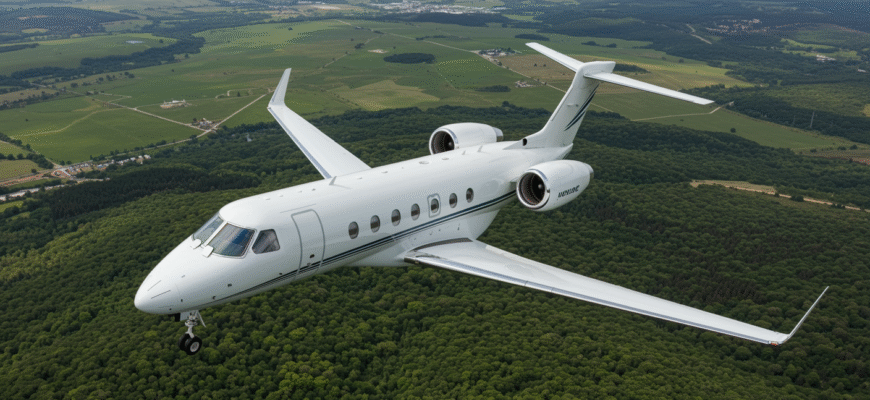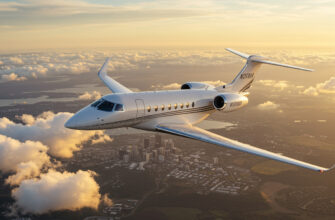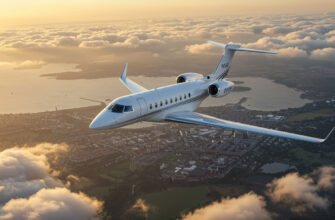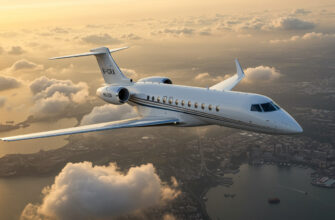Flying privately into and out of Ukraine isn’t something you do for leisure anymore. Since 2022, it’s become a chess game of timing, risk, and purpose. Behind every chartered jet is a story that usually doesn’t make it into press releases or Instagram reels. Some of these planes are carrying war correspondents hunting for frontline truths. Others whisk out CEOs holding on to market ties or seeking protection. There are diplomats, NGO officials, high-net-worth refugees—and yes, even families desperate not to leave their pets behind. The air feels charged, and so do the flight paths. It’s not just another airport-to-airport hop. It’s calculated, on-edge, and often cloaked in quiet urgency.
The War-Twisted Reality Of Private Aviation
What used to be mostly about comfort and time efficiency is now all about control, security, and staying one step ahead of danger. After the 2022 invasion, Ukraine’s skies weren’t just risky—they went dark. Commercial carriers pulled out. Schedules died overnight. Yet private aviation didn’t stop. It just shapeshifted. Media crews still needed eyes on the ground. Government advisors still needed to move. Wealth managers shuttled in legal documents, servers, or cryptocurrency keys packed in steel briefcases. There were stories of chartered jets rerouted mid-air while passengers refreshed Twitter feeds, or of pets being flown out before their humans secured exit paperwork. Wartime flying is never routine.
Who’s Booking These Flights
It’s not just oligarch-level flyers anymore. Sure, the ultra-rich still dominate the manifest, but post-2022, the crowd diversified. Here’s who’s stepping onto these jets:
- Journalists and photographers on NGO budgets or fast-access media permits.
- Wealthy Ukrainians who delayed evacuation until cities flared too hot.
- Foreign business leaders protecting assets or dealing with mergers mid-chaos.
- Embassy staff and diplomats coordinating transport from bordering hubs.
- Families with pets who wouldn’t fly commercial or needed immediate exit.
Speed matters. These charter passengers tend to rebook on short notice, change plans mid-route, or request last-leg connections to Moldova, Poland, or Romania by armored SUV. Preferences are blunt: get in, get out, stay breathing.
The Planes That Can Still Fly
When airspace is restricted, only the most adaptable aircraft make the cut. It’s a mix of speed, range, and compact landing capabilities. That’s why the Gulfstream G650 keeps clocking in serious miles despite premium pricing. Its range covers Western Europe to Kyiv—with room to detour—without refueling. Turboprops like the Beechcraft King Air or Pilatus PC-12 also make appearances in “risky but doable” runways, especially when time matters more than luxury.
There are three big use categories:
| Flight Type | Purpose | Typical Aircraft |
|---|---|---|
| Charter | Urgent business, VIP relocations, private clients | Gulfstream G650, Falcon 7X, Challenger 605 |
| Medevac | Injury extraction, hospital transfers | Learjet 45, Pilatus PC-24, Hawker 800 |
| Government/Sanctioned Ops | Diplomatic, humanitarian, military coordination | Modified Boeing BBJ, regional jets with clearance |
Sometimes it’s about what can land at a scratch runway. Other times, it’s about what’s allowed to even enter airspace without triggering alerts or missiles.
Real Flight Paths: How Routes Are Rewritten
No one’s flying direct into Kyiv these days without a serious pre-clearance game. So how do they do it? Here’s where it gets strategic. Most “Ukrainian” flights don’t actually cross Ukrainian airspace anymore. Instead, charter companies build in stealthy detours and buffer zones. Planes pre-stage at secure strips in:
- Rzeszów or Warsaw (Poland)
- Iași (Romania)
- Chișinău (Moldova)
From there, what happens depends on risk readings. Clients might complete the trip by ground convoy or wait it out until a supervised corridor opens. Airspace blackouts across Eastern Ukraine mean constant rerouting. Charter companies use satellite data to build dynamic flight maps, often in real-time. There’s no “normal.” Only what works that day, that hour.
Operators monitor military-grade apps. Pilots carry risk logs. Briefings are revised even after takeoff. It’s not about luxury; it’s survival logistics wrapped in the skin of a private jet charter. It’s not mainstream, and that’s the point.
It Starts on the Ground
Getting into Ukraine by private jet isn’t as simple as punching coordinates into a Gulfstream’s GPS. Regular commercial terminals are not in play. Flights can’t just land at Boryspil and roll to a lounge for champagne and customs agents. Instead, it starts on the ground—literally—with tactical planning.
Most flights into Ukraine ditch traditional international terminals in favor of pop-up airstrips, hybrid-use airports, and reactivated military zones. Think: abandoned Soviet bases refitted overnight or cleared highways under martial law. These “runways” require all-clear signals, coordination with local military ops, and sometimes pre-dawn landings when the air is quiet.
Operators build hyper-custom ground teams from the ground up: locals who can navigate checkpoints, ex-military handlers, customs expeditors, refueling contractors, and armored convoy drivers ready to roll, all in under an hour. Every touchpoint is a security decision. Every second spent on the ground comes with its own risk profile.
- No standard control tower: Just encrypted comms and fast-moving clouds of secrecy.
- Refueling is unconventional: Fuel trucks aren’t always available—fuel might be smuggled in jerry cans or siphoned from military depots.
- Rapid egress planning: Exit plans must be flexible, and often change mid-flight.
Evacuating Pets, Equipment, and Everything In Between
This isn’t a story about sleek leather seats and champagne—though yes, the leather is still there. This is about what, and who, private jets are carrying. One of the most emotionally raw pieces? Pets.
Engineers might’ve coded a way to get GPUs out of Kyiv, but people cried—and tipped massively—for pilots who would agree to fly out Afghan hounds, sphynx cats, and emotional support parrots. Pets were (and still are) non-negotiable family. That meant biological clearances, on-board space for massive crates, travel sedatives, and in-flight care.
Then there are the other must-haves: rare violins, encrypted hard drives, heirloom jewelry, corporate servers. Anything that couldn’t fall into the wrong hands but couldn’t be left behind. Some jets were filled with pharmaceutical-grade freezers packed with organ donation samples, while others held priceless art stored alongside granola bars under flak blankets.
The logistics became fast and loose, but always absurdly high-stakes. Forget what was in the overhead bin—try dodging a missile with four laptops containing evidence for an international tribunal stashed beneath your seat.
When the Tarmac Is a War Zone
No one flies into Ukraine blind. Every trip comes with risk briefs and warnings. Operators send PDFs marked “STRICTLY CONFIDENTIAL” with diagrams of blast zones, alternate landing charts, and possible emergency reroute zones.
You won’t see “Kyiv-Zhuliany” on many brokers’ dropdown menus right now. Why? Because listing Ukraine publicly puts crews at risk—and jet companies don’t want to make promises or paint targets. That hasn’t stopped flights from coming. It just moved them underground. Figuratively.
Shell-proof hangars are a thing. In certain high-threat moments, a hanger reinforced with steel plates and concrete blocks becomes the default waiting room. Delays aren’t due to weather—they’re due to drones flying overhead or air raid sirens mid-descent.
Insurance waivers? Mandatory. Pilots sign paperwork acknowledging the dangers. Operators review political events 24/7. One airstrike in Kharkiv and your flight gets re-routed to Romania before you even board. For the big players—fly-in journalists, diplomats, foreign contractors—this is all part of the ticket price. And the ride.
The Cost of Flying into Conflict
Let’s talk numbers, because they’re brutal. Flying private into Ukraine doesn’t mean paying luxury prices—it means paying crisis prices.
Flights to neighboring countries like Poland or Hungary have surged in demand, and that ripple effect jacks up every leg of the trip. A route that once cost $30,000 might now run $150k–$300k depending on size, fuel stops, and live risk ratings.
Headed further in, actually into Ukrainian airspace? Expect multiplier pricing. Danger pay for the crew. Live security surveillance from dispatch. Satellite comms. Sometimes a standby team with a different plane waiting in Lviv for a quick evac if the original can’t return.
- Risk surcharges: Every hour beyond a “low-risk” air corridor tacks on thousands.
- Rental of armored convoys: SUVs trail the jet and grab passengers before boots ever hit the runway.
- Unofficial soft-costs: Bribes at checkpoints. Special permission manifests. Satellite phones for every passenger in case…”something happens”.
This world isn’t advertised. It doesn’t show up in glossy jet brochures or on social feeds. But it’s happening. Hundreds of private missions—some heroic, some dark, all complicated. Jet-setting, but the hyper-survival version.









